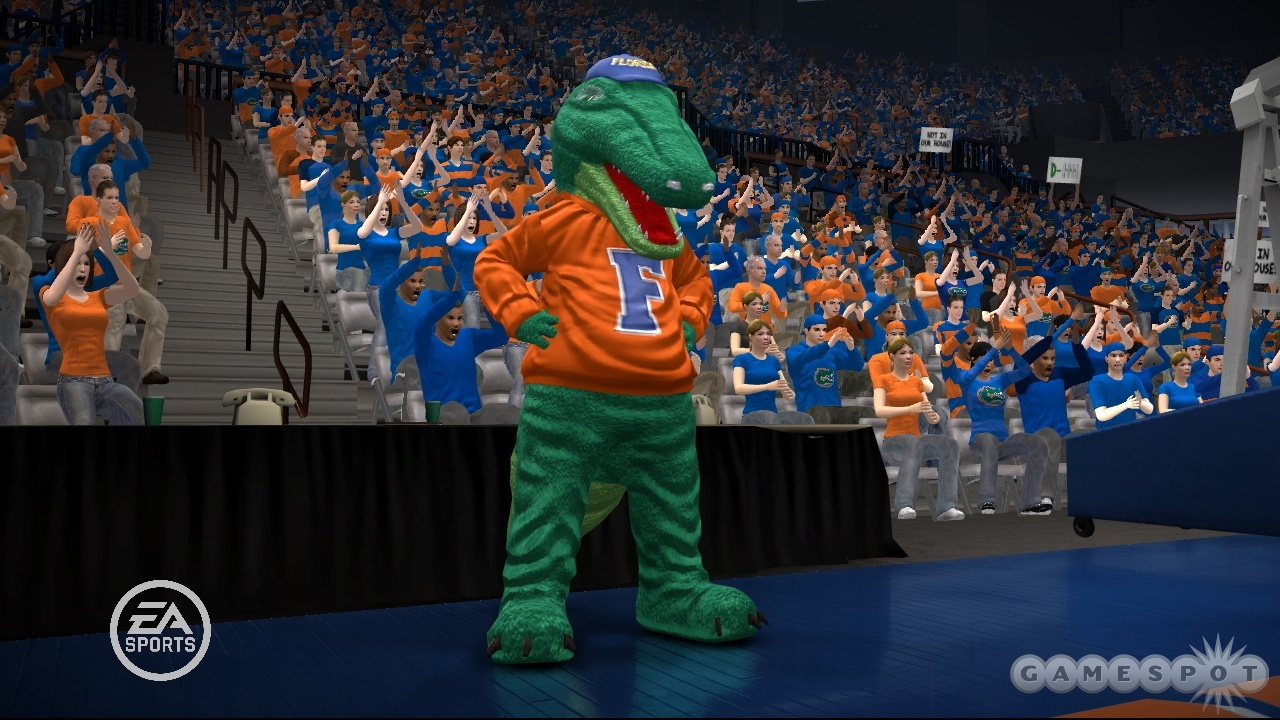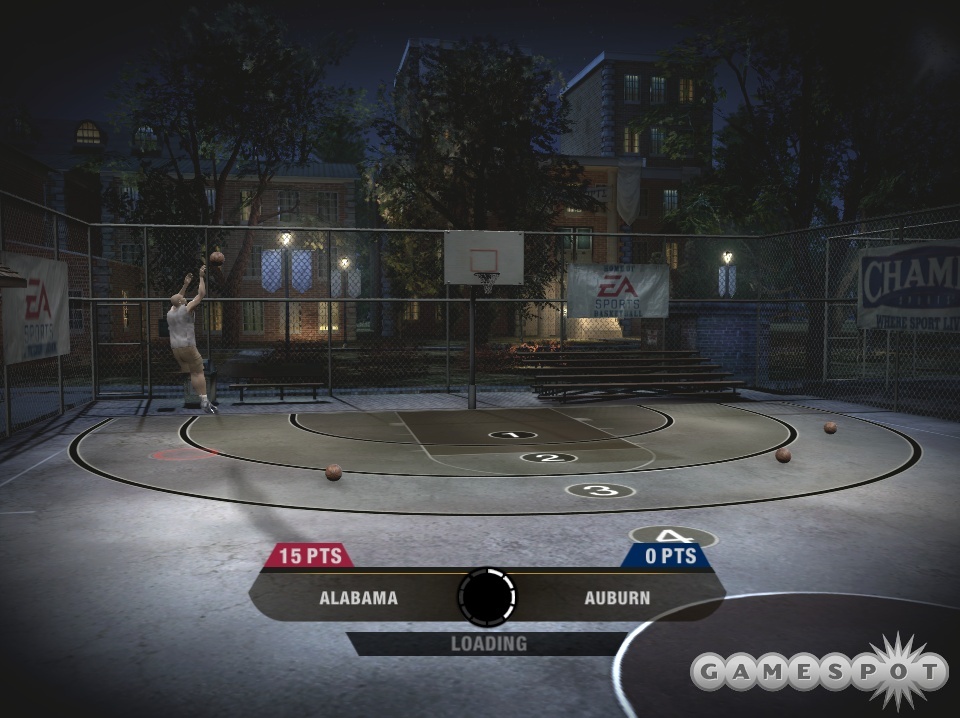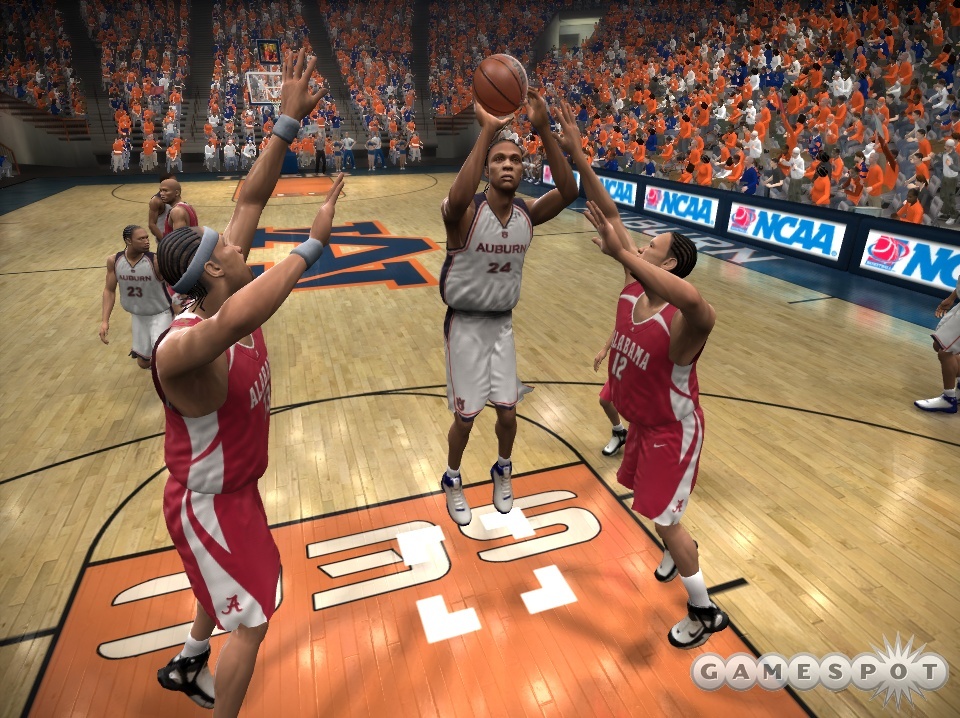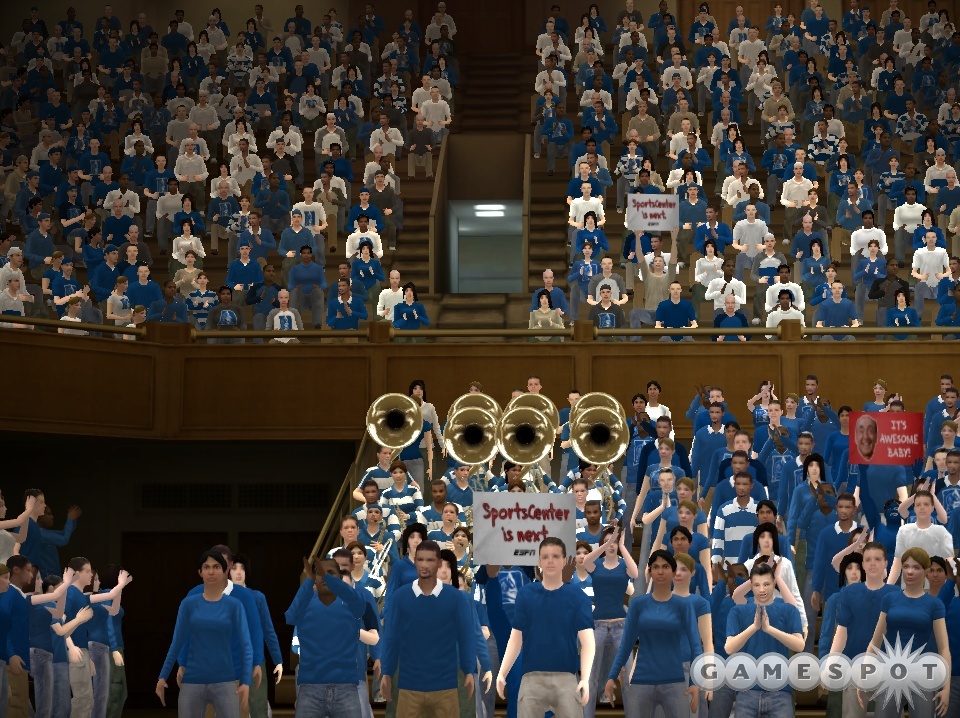EA's March Madness series was a good, but never great, series on the original Xbox. It seemed as if every year it would get a few new things right, but it could never quite get over the hump to achieve greatness. Now, smack in the middle of the real college-hoops season, EA has brought the series to the Xbox 360 for the first time. Perhaps EA should have waited a little longer than midseason to release NCAA March Madness 07, as its many flaws taint an otherwise decent game.

March Madness 07 offers up just a few game modes. You can play a quick game; participate in tournaments such as the NCAA tourney, NIT Season Tip Off, or Maui Invitational; and take the reins of a college basketball program in dynasty mode. There is no basic single-season mode, which is a large oversight since not everyone wants to deal with the responsibility of running a program. Many of the game's menus are difficult to navigate, and as an added bonus, it appears to be impossible to back out of certain screens. The tournament brackets are poorly designed and remain blank until you select an individual game.
If dynasty mode is your thing, you'll find a lot to like here. Most of it will be familiar to veterans of any college sports game; you'll need to recruit players, schedule games, and allocate resources for training and game planning. And of course, there are the negative situations that real coaches get to deal with--players will break rules, athletic directors will bug you about your job performance, and talented players will sometimes leave school early. One neat new feature is the school-pride upgrades. The school's alumni will challenge you to accomplish goals such as winning your home opener, recruiting certain player types, and winning televised games. Your rewards for accomplishing these tasks will help your team and program improve, and they range from cheerleaders and pep bands to new campus facilities like a study hall or practice gym. Hardcore hoops fans will be disappointed to learn that teams do not have their official 2006-2007 schedules in the game, and they'll have to manually craft their team's in-game schedule to match that of the real team. There's an NCAA Tournament selection "show" at the end of the season, but it's nothing more than Dick Vitale and Brad Nessler tossing out generic commentary over static screens showing the seeds.
March Madness uses the concept of team intensity and player composure to mixed results. Players' composure will rise and fall based on how they're performing. The better they play, the more confident they are, which makes them play even better; and if they stink up the joint, they'll probably continue stinking it up some more. In practice, it's tough to notice any impact that player composure has on the game, so you're better off not worrying about it. Team intensity is reflected in a meter that slowly fills as your team makes big plays. Once you've filled a couple of bars, you can hit the left bumper and press a direction on the right analog stick to have a player wave his arms to fire up the crowd or pump himself up. When the meter is full and there's a break in the action, you can unleash an impact moment. Once activated, you're able to dance with cheerleaders, interact with the crowd, chest-bump teammates, and even get in the face of an opposing player. After you're done with the theatrics, the crowd will be whipped into a frenzy (or, if you're on the road, they'll be nice and subdued), giving you a bigger advantage. Some people might find the impact moments to be a little over the top, but they're integrated nicely; they aren't all that frequent, and they're quite entertaining.

From a gameplay standpoint, March Madness 07 is inconsistent. Just when you think it's getting good, some obnoxious flaw will rear its ugly head and ruin the game. But there are a number of things it does well, and the controls are one such example. March Madness 07 eschews NBA Live's three-button shooting scheme for the friendlier two-button setup, where one button shoots and another performs dunks and layups. Live fans will appreciate the inclusion of the excellent freestyle control, which lets you perform a variety of dribbling moves with a flick of the right stick. Floor general play calling lets you quickly choose an offensive or defensive play to run by tapping the D pad. There's even an overlay on the court that shows you where you need to be. The lockdown stick is another nice addition to the mix. When you're on defense, you can move the right analog stick in the direction of the player you're guarding. This lets you play them closely, enabling you to prevent them from receiving a pass, cutting to the hoop, or getting position down low.
The game does a great job of capturing the college atmosphere. Big schools have the stands packed with crazed fans who will do anything to help their team win. Smaller schools have empty stands and fans who are more apathetic to the on-court proceedings. Of course, there are cheerleaders and pep bands to spice things up, and a number of the big-name schools have mascots going bonkers on the baseline. Players will exhibit plenty of emotion--they get hyped up after a monster dunk, and they'll react negatively after getting whistled for a foul.
It's frustrating, then, that there are so many nagging issues to bring the game down, especially when so many of them could be easily solved. Key among these is the absurd number of foul calls. It feels as if a foul is called every time a player drives the lane, goes for a steal, or tries to block a shot. They'll even get called when nobody is near the person with the ball. It's not uncommon for there to be 20 fouls called in a game with five-minute halves--that's a whistle every 30 seconds. Turning the sliders all of the way down lessens this problem a small amount, but both you and the CPU will still be victimized by some questionable officiating. Another glaring problem is the ball physics. It's assumed that all games are being played on Earth, which would lead you to believe that the ball would perform, at least somewhat, like it has every time you've touched one. But realism, gravity, and common sense have no place here. The ball will frequently change directions in midair on its own, pass through solid objects, speed up for no apparent reason, and even teleport from one place to another. This makes rebounding a futile endeavor, as there's no way to tell where the ball's going to go. It also makes it rather difficult to take the game seriously.

As a matter of fact, the ball seems to be more intelligent than some of the players. They do a nice job of running the floor on fast breaks, but it's a whole different story in the half-court set, where they will literally walk around with their back to the action and stare at the crowd. They also have a penchant for catching the ball when standing out of bounds. Your team does spring to life when you call a play, but as easy as it is to call plays, it's not something you want to have to do every time down the court. At least there's a way to get your players to play hard on offense, because there doesn't seem to be any way to get them to play a lick of defense. The lockdown stick lets you cover one player effectively, but this effort is usually for naught as your four teammates let the other team do whatever they want. The lack of defense is frustrating when playing the CPU, but it flat-out ruins the two-player game, as it quickly devolves into dunkapalooza since you can just stand around at the top of the key until the opposing center decides he's had enough of things and leaves your center wide open for a dunk.
At least the game is nice to look at. The arenas are gorgeous, and many of them are near-exact replicas of their real-life counterparts. It's easy to get distracted by the way the hardwood reflects the lights, the rotating advertisements courtside, or the team mascots. Even the generic courts for the smaller schools look nice. The player models are outstanding, and though they aren't based on real players, they're surprisingly realistic. It would be nice for there to have been a few more body types, but the few that are here are detailed, if not a little too buff. As attractive as March Madness can be, there are still a number of ways it could have been improved. The frame rate isn't always smooth, and it could stand to be faster. Individual player moves and dunks are top notch, but the transition from one move to the next is quite often nonexistent. At any given moment, it's easy to spot some sort of clipping, be it the ball going through a player's head or two players merging into a hideous two-headed basketball monster of doom. And while the small rotating advertisements on the sidelines are fine, it's disgusting that players are subjected to an ad for an insurance company that pops up in the middle of the screen...while the ball is in play!
Thanks in no small part to raucous fans, the inclusion of a number of fight songs, and a handful of pep-band staples such as "China Grove", "Jungle Boogie", and "Funkytown", March Madness sounds quite nice. Even the embarrassingly bad "(EA Sports) It's in the Game" song is good for a laugh. However, there is one aspect of the audio that is sure to alienate a few people, and that is the inclusion of Dick Vitale. To most of the college-hoops world, Dickie V's enthusiastic color commentary is synonymous with college basketball, but to a small number of people, he's the anti-Christ. One thing both camps will agree on is that he repeats himself here far too often, as does Brad Nessler, who otherwise does competent play-by-play.

Online play is limited, offering only ranked and unranked games. To add insult to injury, online games are occasionally choppy, and even when they run smoothly, they quickly devolve into steal-and-dunk fests. The game's 1,000 achievement points are spread out over 25 tasks and require you to reach simple goals such as share a roster online, pump up the crowd, get 22 assists, and play an online game. Those who covet points will be pleased to know you can get a good 600 to 700 of them in less than two hours of play.
March Madness 07 isn't a bad game, but it clearly could have used more time in development. The players and the courts look great, but you can only admire the graphics for so long before you realize they're hiding some pretty mediocre gameplay. Like a talented yet inconsistent freshman that hones his skills in the off-season, there's potential here, but the developers need to spend more time working on the fundamentals.